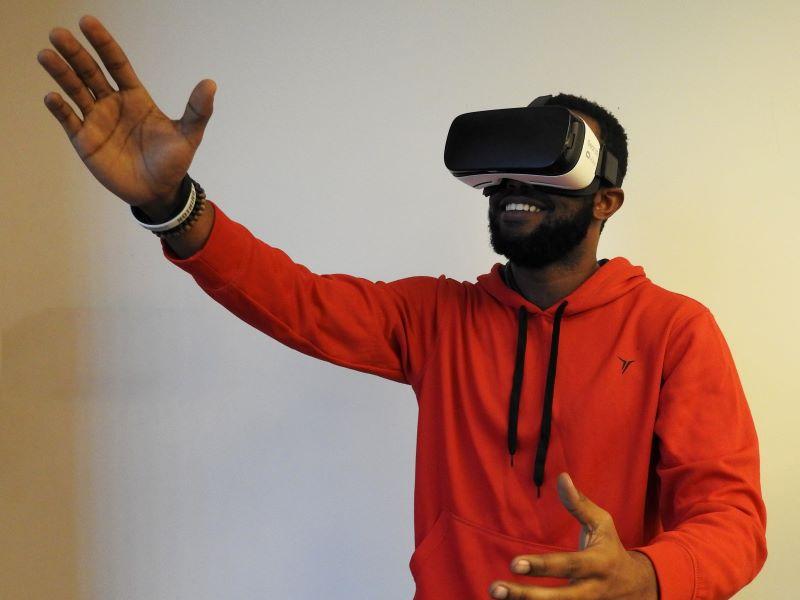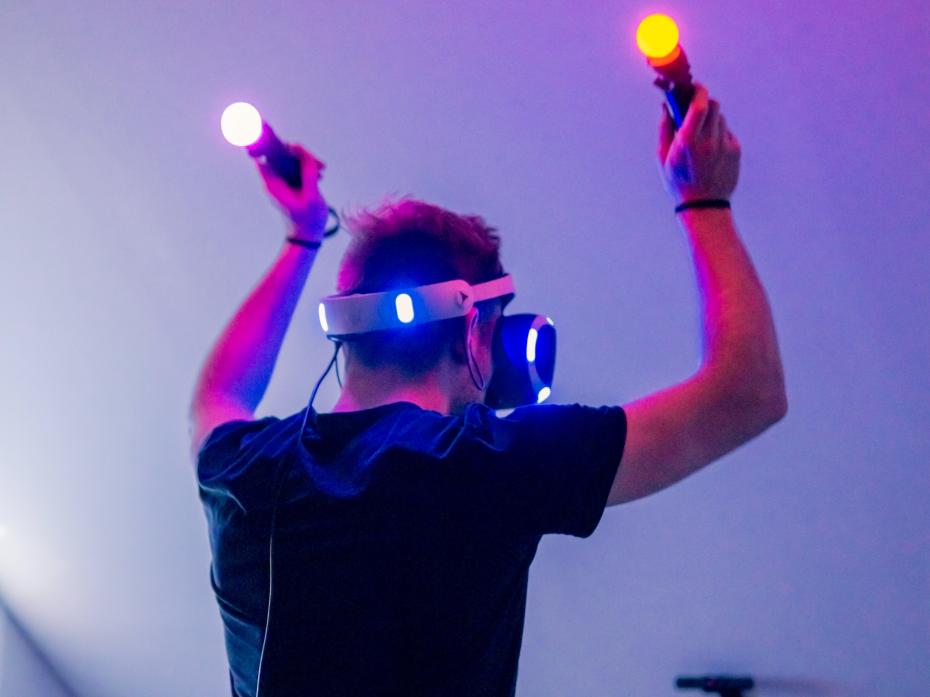Hello, I am Neil McDonnell, research fellow at the University of Glasgow.
So, virtual classroom really is just a virtual environment. So that’s a 3D computer model that’s varying degrees of realistic – depends on what you want for your classroom. And can be from very ordinary-looking places like a lecture theatre but it could also be extraordinary places. It could be inside the body, or it could be a distant galaxy. Just about anything you can articulate.
And on edify, we start off with, I think, 20 environments for people to choose from and to build lessons in.
But the whole point is that people can either bring their own or build out this range of tools, this range of objects, libraries. So that teachers from just about any stripe can use it.
The ways in which we have used it already, are just being able to do the things we would like to be able to do during a pandemic but can’t. So I recorded a lecture the other day where I just stood in front of the PowerPoint presentation and did that kind of chalk-and-talk lecture, as I do in philosophy.
But the way it will be used going forward is to take the things that are very difficult to teach in the traditional mode and start to use superpowers of virtual reality to come at those teaching moments a different way. Think chemistry, think archaeology, architecture, these 3D subject areas and using a 3D medium with which to teach them.
One of the best examples that we saw early on in the process was the visualisation of proteins. One of my colleagues has been leading lessons using this tool, taking two close mutations of a protein and showing the tiny three-dimensional structural difference and then showing that that accounts for around 80 per cent of the cases of cystic fibrosis in the west of Scotland.
And it was telling that after teaching the same lesson about these kinds of close mutations for five years, Professor Tobias went in and spotted a feature of these that he had never spotted before. So this mode of looking at it really unlocks your way of thinking about looking at the object, and makes it a much more intuitive thing.
It’s now a 3D object in your environment, and you’ve just got to think about that spread out across the student body and the ability for a teacher to imagine the best way of teaching something.
The best way of teaching the 3D structure of a protein would be to hold one in your hands, rotate it and look at it from different angles. What virtual classrooms do is they extend the possibilities; they unlock this huge potential way of teaching for teachers that’s a great benefit.
But for students who now get information packaged to them in a sort of more digestible form, a more natural way of learning about these things, that’s what their benefit is.
So, there are two ways you can use the edify platform. As a teacher, one is to just do it on a laptop, a desktop mode, where you move around with a keyboard and mouse much like you do in a computer game, say, but where you’ve got the tools ready for you as a teacher.
The primary mode, though, is for a teacher to have access to a virtual reality system. The student only needs a connection that can get them to videoconferencing, to Zoom or Teams – that’s all they need. The capacity to see the video file, live ideally, so they can have the interaction that’s so powerful in these contexts. But asymmetrically, it works really well too.
What we’ve got in edify is a three-dimensional platform in which teachers can build their own lessons. It’s not built for a future where everyone’s brilliant in 3D modelling or requires anybody to be able to code. It’s built for me today, and I can’t do either of those things.
To prepare a lesson for edify, you first need to get the materials that you would want to teach with JPEGs, movies, your old PowerPoint that you would normally use, and any 3D assets you want, any 3D objects.
When I’ve been doing demonstrations, I look on Sketchfab, which is this colossal model library online. Many of them are free, or they’re very low cost, £10 or £15 or something.
So you bring that material together, and then you launch the lesson builder. Drag those in, populate them on the desktop, then you launch your lesson. And inside your lesson then, you can set it up how you want it.
The point of the toolkit of edify, as it currently stands, is that it can let you maximise the use of whatever kit you have already.
The ultimate way of bringing virtual elements into teaching, however, is to use them as seasoning on the real world, right. So to sit in the lecture theatre, the classroom, the seminar room, lab and have a virtual presence there, too.
I think that’s just a great promise that this isn’t the end of that particular evolution of teaching, that it’s a step towards an even more powerful, wide-ranging one.
Neil McDonnell is a research fellow in philosophy and augmented and virtual reality at the University of Glasgow.



comment